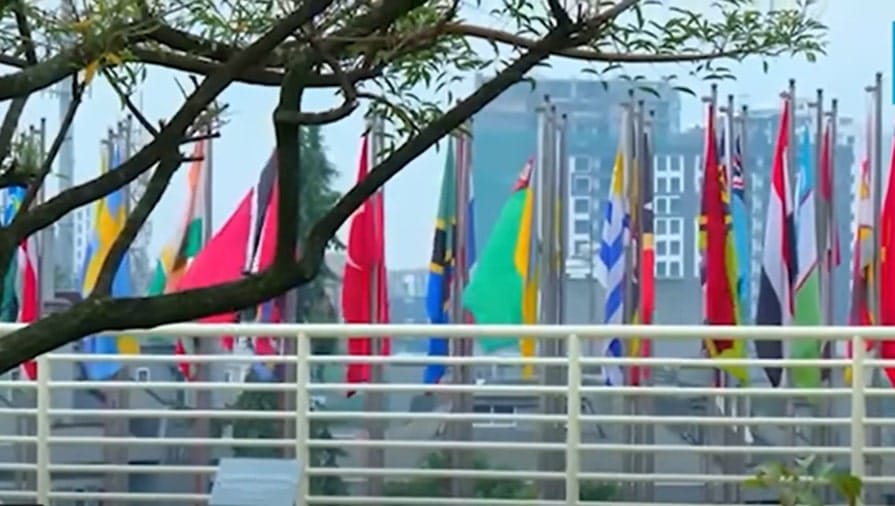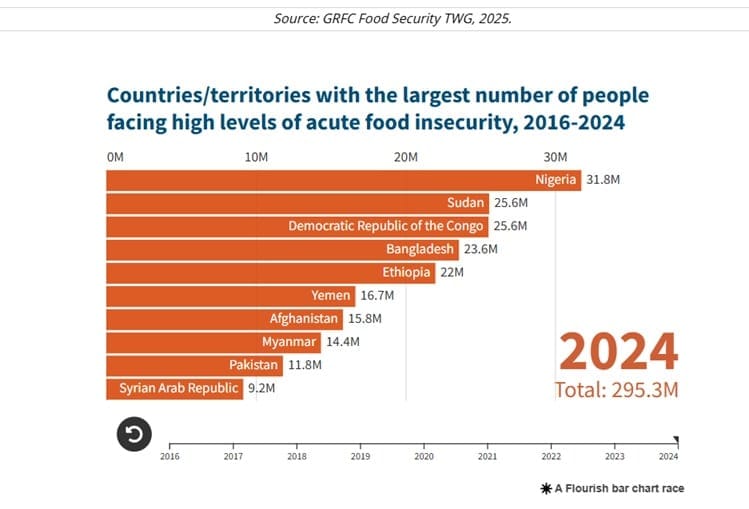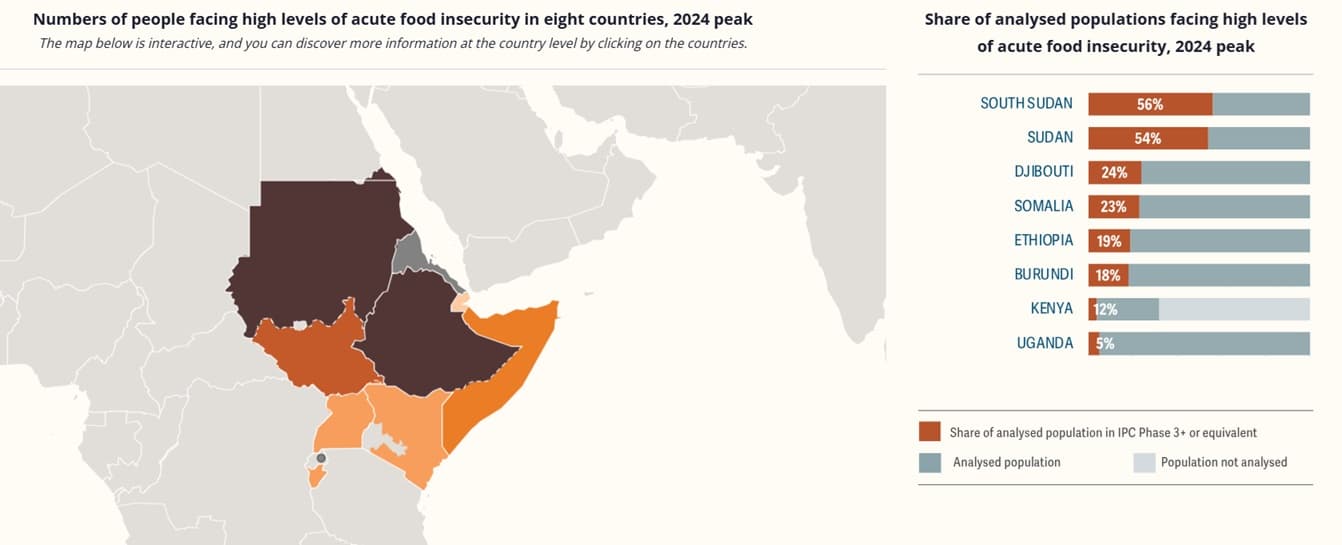July 29, 2025
The Habesha News Desk


In 2024, Ethiopia has emerged as the fifth worst food crisis in the world, with an estimated 22 million people suffering from high levels of acute food insecurity, according to the latest global analysis. This staggering figure places Ethiopia among the top five most affected countries—behind Afghanistan, the Sudan, the Syrian Arab Republic, and Yemen—and underscores the severity of the humanitarian crisis unfolding within its borders.
This crisis forms part of a global emergency, with 295.3 million people worldwide facing acute food insecurity at the peak of 2024, the highest figure ever recorded. Ethiopia’s situation is particularly concerning given the rapid escalation in food needs over recent years and the compounding nature of its drivers.
Ethiopia’s Escalating Hunger Crisis
The food insecurity crisis in Ethiopia is the result of a dangerous convergence of armed conflict, climatic extremes, economic hardship, and disrupted humanitarian operations.
1. Conflict and Displacement
Armed conflict remains a primary driver. While the peace agreement in late 2022 between the federal government and the Tigray People’s Liberation Front (TPLF) brought some relief, instability continues in several regions, including Amhara, Oromia, and parts of Tigray. Armed clashes and insecurity have resulted in the displacement of over 4 million people, disrupting farming cycles, markets, and humanitarian access.

2. Climate Shocks and Agricultural Collapse
Ethiopia is grappling with the dual impacts of prolonged drought and flash flooding, both intensified by climate change. Areas in the south and southeast have suffered multiple consecutive failed rainy seasons, leading to livestock deaths and failed harvests. In contrast, flood-prone regions in the west have experienced severe inundation, damaging farmland and displacing families.
These erratic weather patterns have severely weakened Ethiopia’s already fragile agricultural sector, which employs over 70% of the population and is critical for both food and income.
3. Economic Instability
The country’s macroeconomic situation has further compounded the crisis. Double-digit inflation, combined with the depreciation of the Ethiopian birr, has made basic food items unaffordable for millions. Supply chain disruptions and high transportation costs, partly due to fuel shortages, have pushed food prices well beyond the reach of vulnerable households.
Ethiopia in the Global Context
The situation in Ethiopia reflects a broader pattern seen across multiple food crisis zones. Since 2016, the number of people facing acute hunger has risen dramatically, fueled by a combination of conflict, climate, and economic volatility.
In 2024, Ethiopia joins a grim list of countries experiencing the world’s most severe food crises, including:
-
Afghanistan – marked by economic collapse, drought, and ongoing conflict.
-
The Sudan – facing conflict-related displacement and market disruptions.
-
Syrian Arab Republic – suffering from a prolonged war and economic paralysis.
-
Yemen – enduring nearly a decade of war and blockades.
These countries not only have large numbers of people affected but also high proportions of their populations in crisis or worse Integrated Food Security (IPC Phase 3+).
A Call for Urgent and Coordinated Action
The severity of Ethiopia’s crisis has prompted urgent calls from humanitarian organizations and UN agencies. Immediate and long-term interventions are needed to prevent further deterioration and potential famine-like conditions in some regions.
Key priorities include:
-
Scale-up of emergency food assistance, particularly in conflict and drought-affected areas.
-
Restoration of humanitarian access, especially in hard-to-reach zones where needs are highest.
-
Livelihood support to protect agricultural assets and restore income sources.
-
Climate adaptation and resilience-building, to prepare vulnerable communities for future shocks.
The window for action is narrowing. With the lean season intensifying and millions already facing food consumption gaps, the international community must act decisively to avert catastrophe.
Conclusion
Ethiopia’s rise to the fifth-worst food crisis in 2024 is a stark indicator of the deepening global hunger emergency. It highlights how intersecting crises—conflict, climate, and economic turmoil—can rapidly unravel development gains and push millions into desperation. As global food insecurity reaches historic levels, Ethiopia serves as both a humanitarian priority and a warning of what inaction can bring.
Sources:
-
Global Report on Food Crises 2024
-
Integrated Food Security Phase Classification (IPC)
-
UN Office for the Coordination of Humanitarian Affairs (OCHA)
-
FAO and WFP Joint Hunger Hotspots Reports
